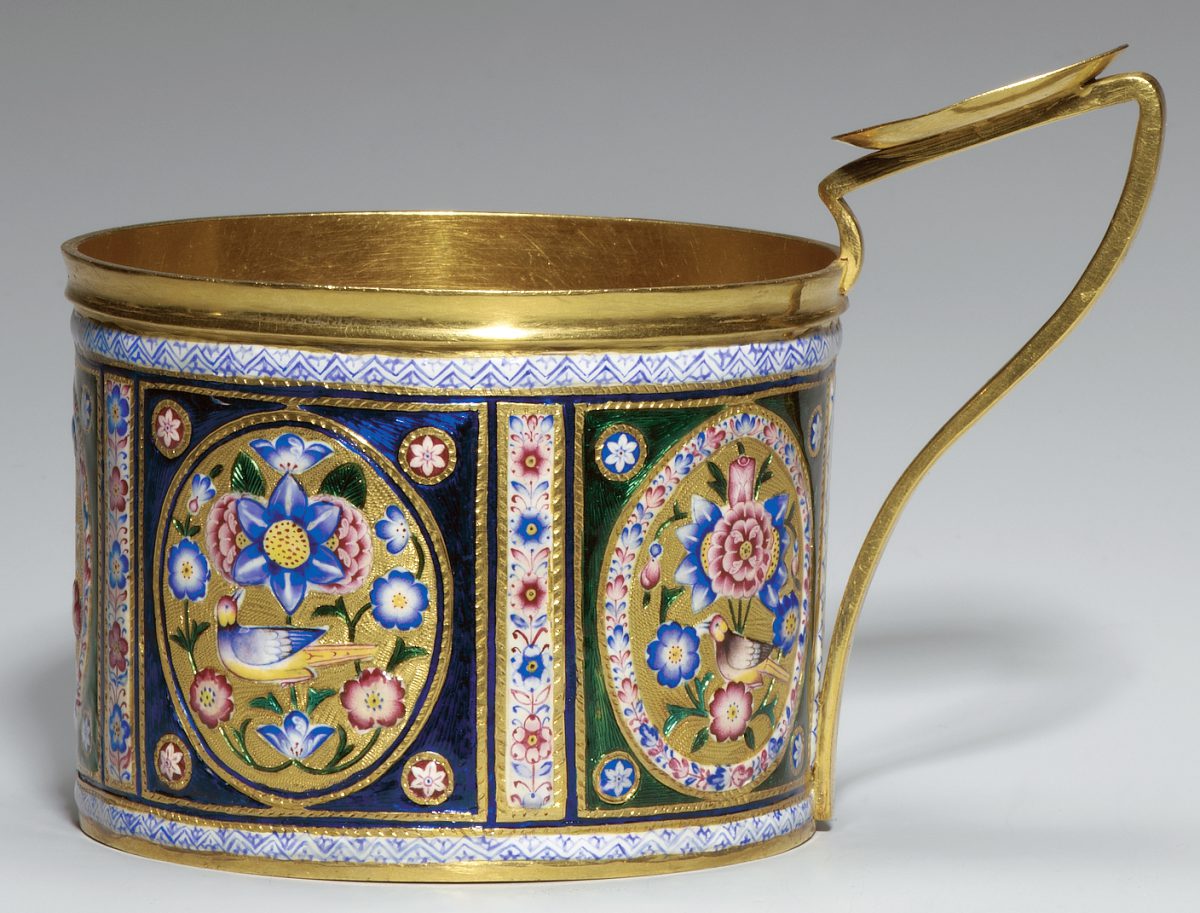



Title: Tea-glass Holder
Date: 1860's
Location: Russia, probably Caucasus
Materials: gold, translucent and painted enamel
Dimensions: diameter 8.2 cm
Accession Number: RUS 475
Other Notes:
The Caucasus, where Eastern and Western influences intermingled, is the likely location of manufacture for this piece that incorporates elements from both. The form is occidental, while the enamel is reminiscent of Qajar work. More specifically the decoration may be compared with that found on a gold beaker, signed by Malik Muhammad, son of Hajji Yusuf, and dated 1851, in the State Hermitage Museum, St Petersburg.
Bibliography:
Haydn Williams, Enamels of the World: 1700-2000 The Khalili Collections, London 2009, cat. 43, p. 94.
Zoom
Close

Create your own collection of artworks that you can print or save as a PDF. Please enter you email to enable feature.
Small Flask | JLY 1075
Has been added to your collection.
TIP:
You can now access and view your collection from the main menu at any time.